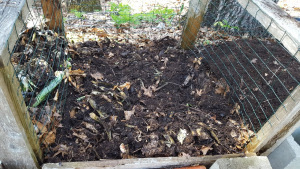Adventures in Fermentation, With Jen Blood
A few weeks ago, I was diagnosed with de Quervain’s tenosynivitis — a condition in which the tendons connecting the wrist and thumb and the synovial sheath encasing those tendons become inflamed from overuse. It’s apparently not an uncommon condition, and one I’ve actually suffered from before, though that was over a decade ago. As a result, however, many of the thumb-intensive activities I had planned for late winter and spring have been put on hold. My hand is in a splint, I go to physical therapy twice a week, I’ve given up gluten and refined sugar, and the knitting of late winter and gardening activities of early spring have been seriously curtailed.
None of this has been especially helpful for my writing productivity, either. I’m actually writing this right now using speech-to-text software while icing my thumb. Since so many of the things I want to do are on the list of things I can’t actually do, I’ve been forced to find other ways to entertain myself/keep myself busy. One of those ways has become a little bit of an obsession of late:
Fermentation, or “the chemical breakdown of a substance by bacteria, yeasts, or other microorganisms, typically involving effervescence and the giving off of heat.” That definition courtesy of the Google dictionary. I’ve always been interested in the idea of fermenting stuff, though it was limited to a vague idea that someday I might like to make my own beer, and have for many years had high hopes of composting dog waste at the local dog parks, something that other communities have done successfully around the country.
Now that I have the space and the time, it’s felt like a prime opportunity to really dig into this whole fermenting thing. I still ultimately have my eye on the Bath dog park for some excellent composting experimentation, but for now I’m starting small. Sort of. Our kitchen looks like a lab, and smells like a brewery. Cheesecloth has become my new best friend. I go to thrift stores and yard sales looking for the perfect glass gallon jugs, and last week I made a pilgrimage to Richmond, Maine, to visit the brewery store there. I was disappointed to find it closed, but it’s probably for the best. Just looking through the window, all the gear had me salivating.
[image error]
Apple cider vinegar and coconut yogurt, in process.
So far, I’ve made apple cider vinegar, coconut yogurt, experimented with the fermentation times of various types of bread starters, and become just a little bit obsessed with my compost pile. It’s all about the rotting, people. Watching the various stages is kind of fascinating, particularly in the compost — different critters coming and going, banana peels going from brown to black to mush to beautiful, nutrient-rich soil. It’s the circle of life, right in my own backyard.



Beyond the compost, my greatest achievement to date is making my first batch of kombucha. For those who don’t know, kombucha is fermented black or green tea. It’s fizzy and funky and a little bit sweet, with a small amount of alcohol and just the right kick of caffeine. Kombucha is made using a SCOBY — an acronym that stands for Symbiotic Culture of Bacteria and Yeast. My niece was totally freaked out when I acquired my first SCOBY, and I’ll admit it’s a little monstrous looking. I got mine from a lovely old friend I hadn’t seen for years, who said she had SCOBYs to spare when I put out a request on Facebook. As soon as I had mine in hand (or in jar, actually – you have to be very careful about handling these little gems), I promptly got to work on the first experiment.
[image error]
SCOBY!
Within eight days, one SCOBY had become two, and within ten days, the over-sweet combination of black tea and a whole lot of cane sugar became a lot less sweet, with just the right kick from fermentation.
The next step was to move into the second fermentation phase – this one taking place in individual bottles rather than the single gallon jug. I’ll admit, that got a little bit messy. With only one working hand, transitioning the tea from jug to bottles was no small feat. I had the genius idea to use a siphon. Pro Tip #1: When using a siphon, have an exit strategy in mind. You have to be prepared when the vessel receiving the liquid is effectively filled. Sadly, I learned this the hard way. Our kitchen floor got quite a dousing, but it needed to be washed anyway so I guess there was no harm done.
During the second fermentation phase, the bottled kombucha is sealed tightly and set aside, but closely monitored for three to five days. I say closely monitored because there’s a better-than-average chance your first brew could explode without proper supervision, thanks to the buildup of pressure due to increased levels of carbon dioxide in the vessel.
Happily, I averted that particular crisis. And now, I have one brand new (and very tasty) batch of mango kombucha ready for consumption, with two more jugs of fermenting SCOBY in the works. With that under my belt, I feel like it’s only a matter of time before I’m ready to move onto a grand social/scientific/eco-experimental endeavor at the Bath dog park.
[image error]
Jen Blood is the USA Today-bestselling author of the Erin Solomon Mysteries and the Flint K-9 Search and Rescue Mysteries. To learn more, visit http://jenblood.com.



